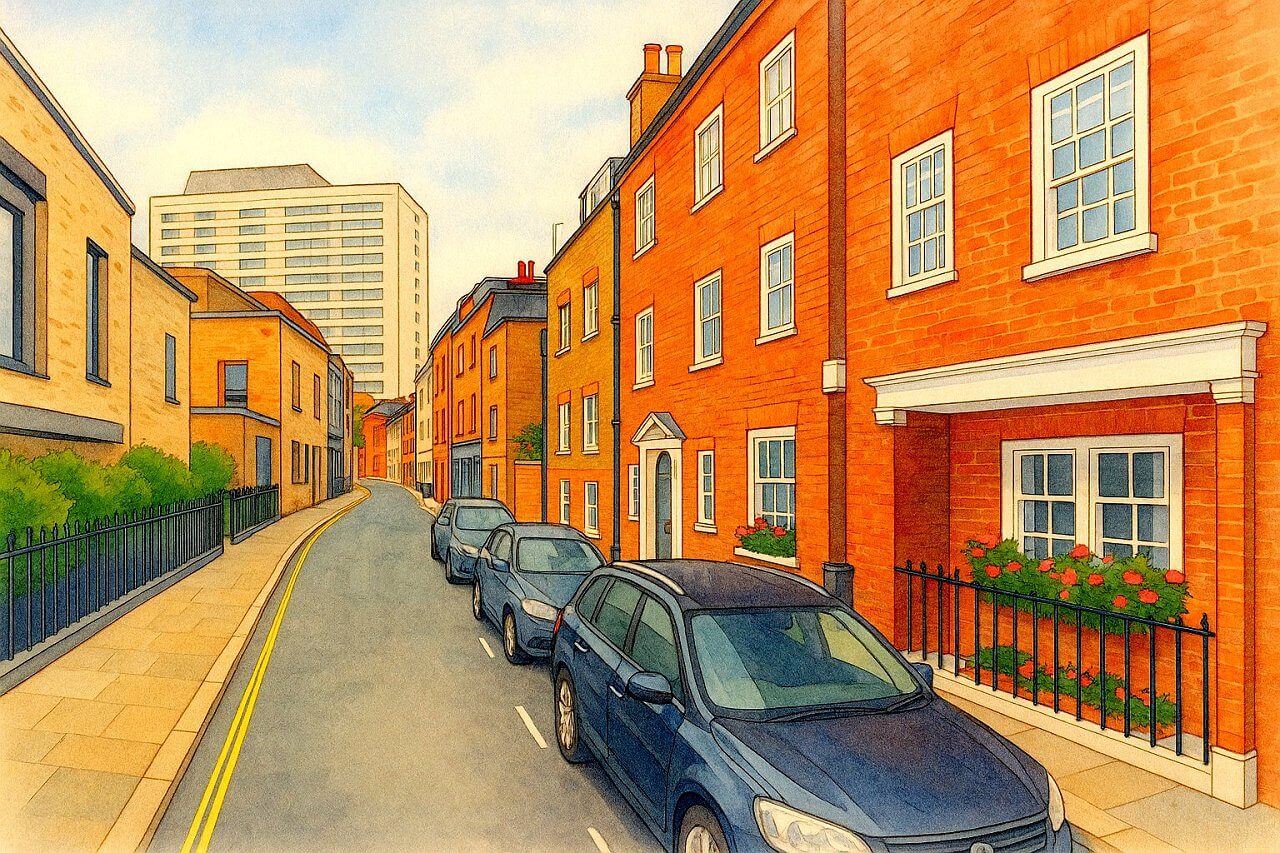
Wilfred Street, London
Wilfred Street is a quiet and historic one-way street in the City of Westminster, connecting Palace Street to Buckingham Gate, just a stone's throw from Buckingham Palace.
Wilfred Street lies in the heart of the City of Westminster, Central London. It runs in a northward direction, beginning at Palace Street and ending at Buckingham Gate.
The street is nestled in a historically significant and prestigious area, surrounded by important landmarks including Buckingham Palace, Victoria Palace Theatre, and Westminster Cathedral.
Length and Layout
Wilfred Street is a short, straight road measuring approximately 300 feet (around 91 metres) in length.
It operates as a one-way street for vehicular traffic, with traffic flowing from the south at Palace Street to the north at Buckingham Gate. The layout is relatively narrow, lined with traditional London townhouses, a few commercial premises, and secure government buildings.
History of Wilfred Street
Wilfred Street dates back to the mid-19th century, a period of rapid urban expansion and architectural development in Westminster. It was likely developed during the Victorian era as part of the wider transformation of Westminster into a residential and administrative district.
The area once served as housing for government clerks, civil servants, and others working in and around Whitehall and the royal household.
How Wilfred Street Got Its Name
The origins of the name Wilfred Street are not definitively documented, but the name "Wilfred" is believed to be a tribute to Saint Wilfrid (or Wilfred), a prominent English bishop and saint from the 7th century.
The naming of streets after saints and historic ecclesiastical figures was common in the 19th century, particularly in this part of Westminster, which has deep religious ties through institutions like Westminster Abbey and Westminster Cathedral.
The Character of Wilfred Street
Wilfred Street exudes a sense of calm despite its central location. The architecture consists of a mixture of late Victorian and Edwardian buildings, many of which have been converted into private flats or boutique offices.
Charming and discreet, the street offers an almost village-like atmosphere, contrasting the bustle of nearby Victoria and the grandeur of Buckingham Palace.
It is also known for being the location of certain government-associated properties, including accommodation for personnel from the security services, lending an air of secrecy and understated importance.
Property Prices on Wilfred Street
As of May 2025, property prices on Wilfred Street remain significantly higher than the London average. This is due to its proximity to royal residences, government institutions, and tourist attractions.
Average sale prices for flats on Wilfred Street are around £1.2 million for a two-bedroom apartment of approximately 950 sq ft (88 sq metres).
By comparison, the average property price in Greater London stands at around £525,000, making Wilfred Street more than twice as expensive as the city average.
Rental prices are also steep, with a one-bedroom flat renting for around £3,000 per month, depending on size and specification.
Nearest London Underground Stations
Wilfred Street is very well-connected by public transport, with several London Underground stations within a short walking distance:
- St. James’s Park Station – served by the District and Circle lines (about a 5-minute walk north).
- Victoria Station – served by the Victoria, District, and Circle lines, as well as National Rail services (around 6 minutes’ walk south).
There are also multiple bus routes and Santander cycle hire docking stations nearby, offering alternative ways to explore the area.
Fun Fact About Wilfred Street
One of the lesser-known facts about Wilfred Street is that it has historically housed MI5’s staff accommodation. Although not officially confirmed, the presence of security bollards, discreet surveillance, and secure entryways has led to long-standing speculation that the street plays host to members of the UK’s intelligence community.
This adds an air of intrigue to what might otherwise appear to be a quiet residential lane, offering curious passers-by a subtle hint of the street’s strategic importance.
Quick Facts
- Street Name: Wilfred Street
- Location: City of Westminster, Central London
- Length: Approx. 300 feet (91 metres)
- Direction: One-way from Palace Street (south) to Buckingham Gate (north)
- History: Established mid-19th century during Victorian expansion
- Name Origin: Likely named after Saint Wilfrid
- Character: Quiet, historic, with government ties and elegant architecture
- Property Prices (May 2025): ~£1.2 million for a 2-bedroom flat (~950 sq ft / 88 sq m)
- Nearby Tube Stations: Victoria (Victoria, District, Circle), St. James’s Park (District, Circle)
- Fun Fact: Rumoured to house security services’ staff accommodation
Map of Wilfred Street, London

Painting of Wilfred Street, London (View image in full size)